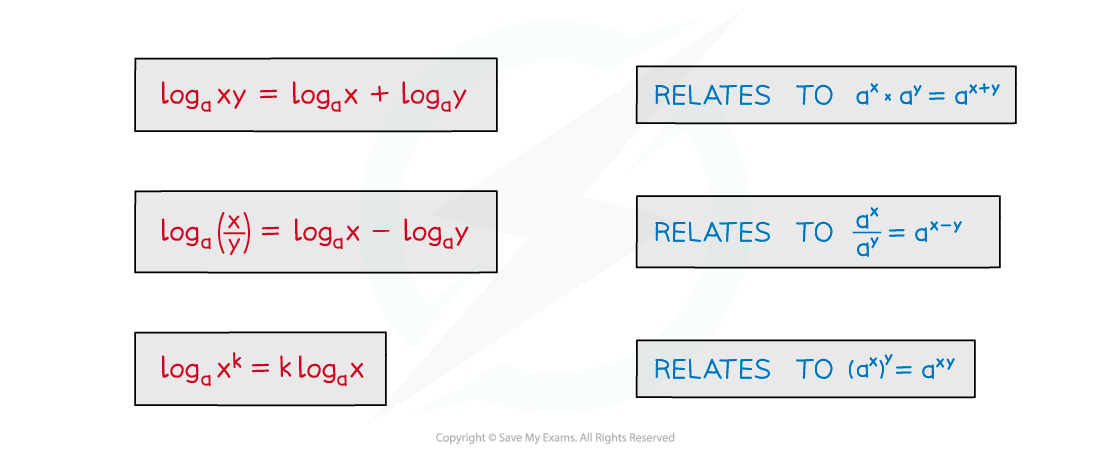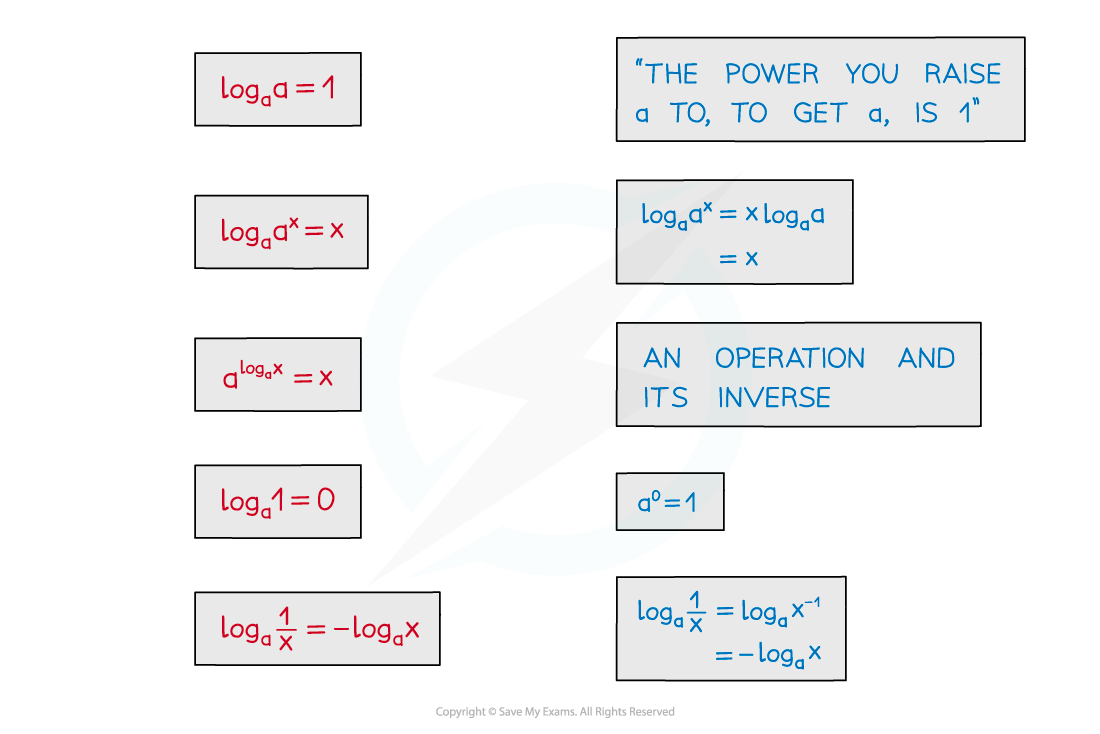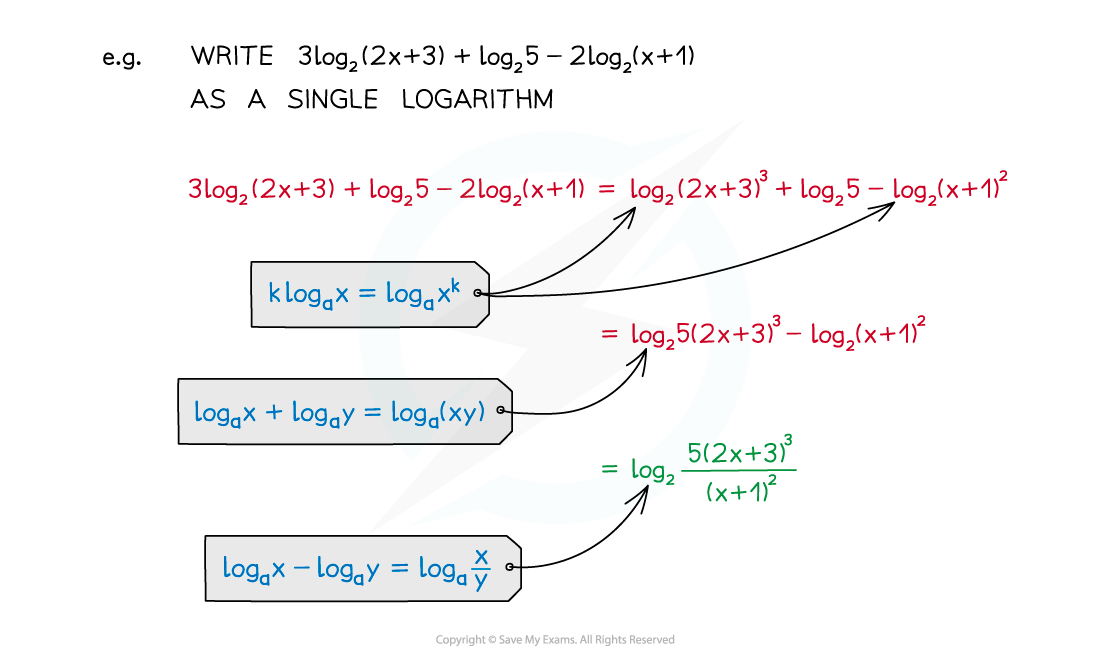Laws of Logarithms (Cambridge (CIE) O Level Additional Maths) : Revision Note
Did this video help you?
Laws of Logarithms
What are the laws of logarithms?
Laws of logarithms allow you to simplify and manipulate expressions involving logarithms
The laws of logarithms are equivalent to the laws of indices
The laws you need to know are, given
:
This relates to
This relates to
This relates to

There are also some particular results these lead to

Beware…
…
These results apply to
too
Two particularly useful results are
How do I use the laws of logarithms?
Laws of logarithms can be used to …
… simplify expressions
… solve logarithmic equations
… solve exponential equations

Examiner Tips and Tricks
Remember to check whether your solutions are valid
log (x+k) is only defined if x > -k
You will lose marks if you forget to reject invalid solutions
Worked Example
a) Write the expression in the form
, where
.
Using the law we can rewrite
as
.
Using the law :
b) Hence, or otherwise, solve .
Rewrite the equation using the expression found in part (a).
:
Using the index law ::
Using the law :
Compare the two sides.
Change of Base
How do I change the base of a logarithm?
The formula for changing the base of a logarithm is
The value you choose for b does not matter, however if you do not have a calculator, you can choose b such that the problem will be possible to solve
Why change the base of a logarithm?
The laws of logarithms can only be used if the logs have the same base
If a problem involves logarithms with different bases, you can change the base of the logarithm and then apply the laws of logarithms
Changing the base of a logarithm can be particularly useful if you need to evaluate a log problem without a calculator
Choose the base such that you would know how to solve the problem from the equivalent exponent
This formula had more use when calculators were less advanced
Some old calculators only had a button for logarithm of base 10
To calculate
on these calculators you would have to enter
The formula can be useful when evaluating a logarithm where the two numbers are powers of a common number
The formula can be useful when you are solving equations and two logarithms have different bases
For example, if you have
and
within the same equation
You can rewrite
as
which simplifies to
Or you can rewrite
as
which simplifies to
The formula also allows you to derive and use a formula for switching the numbers:
Using the fact that
Examiner Tips and Tricks
It is very rare that you will need to use the change of base formula
Only use it when the bases of the logarithms are different
Worked Example
By choosing a suitable value for b, use the change of base law to find the value of without using a calculator.
Note that 8 and 32 are both powers of 2, where 8 = 23 and 32 = 25.
Therefore we can choose b = 2 in the change of base formula.
:
If 23 = 8 then log2 8 = 3 and if 25 = 32 then log2 32 = 5.

You've read 0 of your 5 free revision notes this week
Sign up now. It’s free!
Did this page help you?
